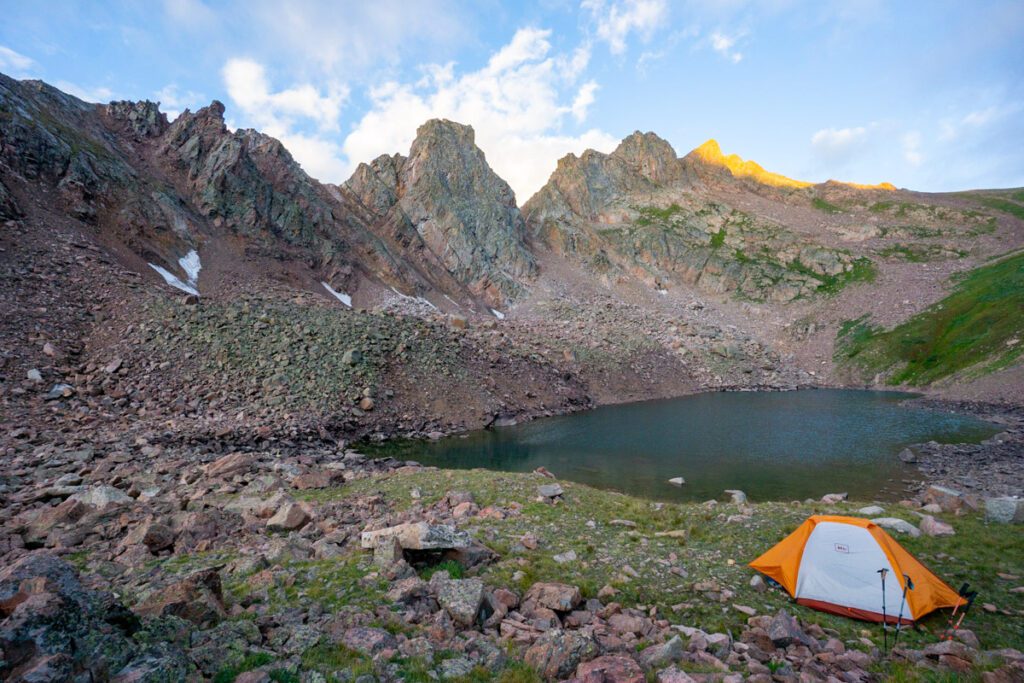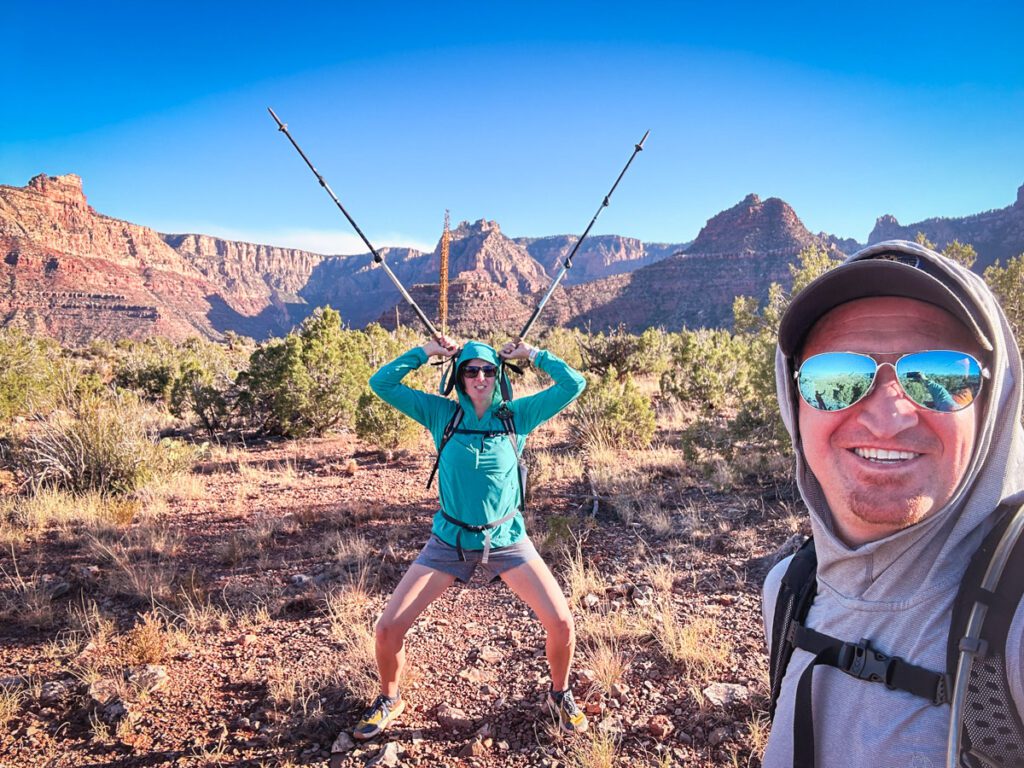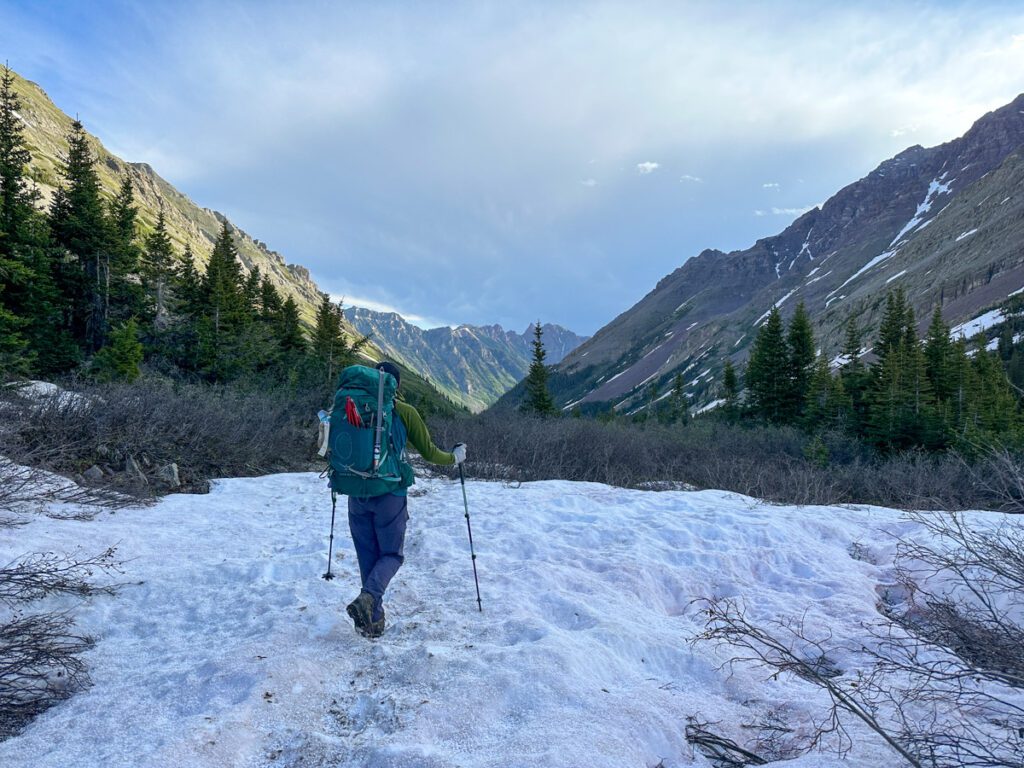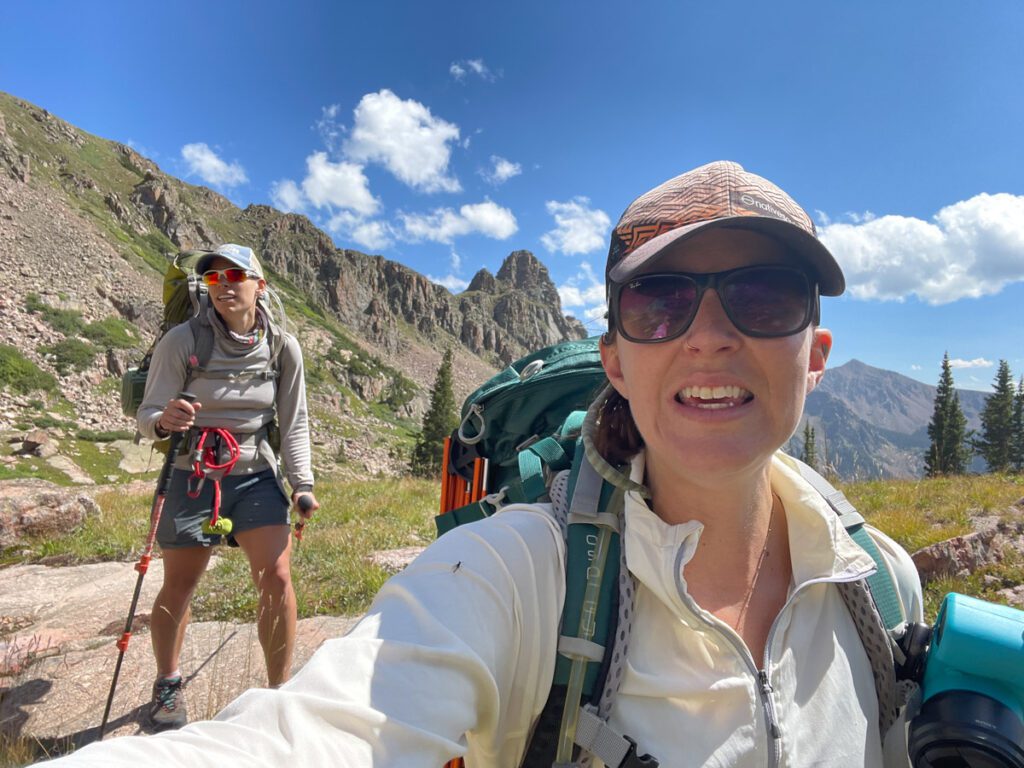Last Updated on August 29, 2024 by foxintheforest
Starting out as a backpacker can be quite daunting. There’s so much to consider: the gear, the weight, the distance, and the prospect of sleeping miles away from civilization. It can feel overwhelming.
But here’s the truth:
It doesn’t have to be as intimidating as it seems.
In this guide, I’ll share some valuable insights that I wish I had before embarking on my backpacking journey.
With over 15 years of experience carrying my home on my back, I hope to help you gain the confidence you need to hit the trails for the first time.
Youth Can Be a Double-Edged Sword
I went on my first backpacking trip at the age of 14, and let me tell you, I was not the outdoorsy type back then. In fact, I had very little camping experience and had never carried my own gear before. Yet, I found myself on one of the toughest backpacking routes in the US—the Presidential Traverse—because my friends were doing it.
And guess what?
I absolutely disliked it!
I swore I would never attempt that again. Fast forward over 20 years, and when my partner expressed interest in backpacking, I decided to give it another shot. This time, I was more self-aware and had learned to set healthy boundaries.
I discovered a newfound enjoyment for the wilderness and didn’t really embrace my “backpacking phase” until my mid-to-late 30s. So if you think your age is a limitation, you might just surprise yourself.
Don’t Worry About Pack Weight!
I can’t emphasize this enough: STOP STRESSING OVER PACK WEIGHT!
Seriously.
While lightweight gear is undeniably beneficial, when you’re just getting started, the most important focus should be:
How you pack your bag.
When you pack effectively, you’ll hardly feel the weight of your load. Personally, I’ve carried everything from climbing gear to heavy water supplies on my adventures. Yes, carrying 60 lbs can be tough, but you don’t need to obsess over having an ultra-light pack. There’s a right balance.
Sure, you shouldn’t pack your entire kitchen, and ultralight gear can be pricey. It takes a few trips to figure out what you truly need (everyone has their luxury item—more on that later). So when you start out, focus on proper packing. Here’s a quick guide:
- Place your sleep system and clothes you won’t need during the day at the bottom of your bag to create a stable base.
- Next, add your water bladder (they’re easier to manage than bottles and help distribute weight better).
- Then, load your heaviest items in; typically, this will be your food. The aim is for it to sit around mid-back or just below to keep weight on your hips.
- If you’re carrying a tent, position its heaviest parts close to your back or in the exterior side pockets if it’s lighter.
- Then add cookware.
- Finally, place any lightweight items you may need during the day (like a rain jacket or bug spray) on top.
- Keep a quick snack and lip balm handy in a hip belt pocket.


Opt for Multi-Functional Gear
One effective backpacking tip is to carry items that can serve multiple functions. This helps reduce overall weight. While some gear will inevitably have a single purpose, being creative with your supplies can lead to a more efficient kit.
Here are some examples:
- Substitute traditional band-aids and gauze with climber’s tape and super glue. They can be used for field repairs or even as makeshift bandages.
- Wrap duct tape around your hiking pole for quick repairs.
- A bandana or buff can provide warmth, act as a pre-filter for murky water, or serve as a compress or tourniquet in emergencies. Can you think of other uses?
Invest in Hiking Poles
If you don’t have hiking poles yet, consider getting a pair. They are a game-changer.
Hiking poles allow you to utilize your upper body along with your legs, which can greatly alleviate stress on your joints while backpacking.
I never go backpacking without my poles—they significantly lessen the load on your body.
In our household, we have our favorites: I love my Black Alpine Carbon Cork poles, while my partner prefers the REI Traverse Trekking Poles (just so you know, those are affiliate links). Choose whatever best fits your budget, but make sure to opt for clamp-lock poles instead of twist-lock ones; they tend to be more durable—take it from someone who’s been there!


Start with Easier Trails
If you’re feeling anxious about your first backpacking trip, that’s completely understandable. Rather than tackling a difficult route right out of the gate, choose a simpler trail.
There’s a lot to learn about yourself through this experience—things that no one else can teach you. Ask yourself:
What’s your natural pace? Do you prefer to sprint for a while then take a break, or do you need more frequent shorter breaks?
What locations do you enjoy for backpacking? For example, while I loved backpacking in Colorado and completed a significant portion of the Colorado Trail, I later realized I wasn’t entirely fulfilled. Eventually, I discovered my passion for desert backpacking—especially in the Grand Canyon, which isn’t a universally popular choice.
It took me three trips to the Grand Canyon before I felt comfortable backpacking below the rim. Since then, I’ve tackled several challenging routes in the area. Despite being well-versed in camping, I needed a few practice runs to navigate such rugged, remote terrains.
You may not discover what truly excites you about backpacking without a little experimentation.
Don’t expect to master everything on your first go; every trip is an opportunity to learn more about yourself. Stay open to what the environment can teach you, and ignore the noise on social media (yes, that includes my own voice!).
Research Your Destination
Thorough research will significantly boost your confidence on the trails. Backpacking is mostly about putting one foot in front of the other, so while the activity itself isn’t particularly difficult, understanding the terrain and trail specifics is essential.
Start by examining the region and landscape. Make sure you can confidently answer these questions:
- Are there any unique weather considerations for the area?
- What’s the best time to go backpacking?
- Do I need special equipment like a sun umbrella, rain poncho, or extra water bladders?
- What should I know about the wildlife and plant life? Will I need bear spray or a hanging food bag? Keep in mind that small animals can cause big problems!
- What type of terrain can I expect?
Next, investigate your specific trail route. Be sure to know:
- Do you need any special permits?
- What’s the best way to access the trailhead? Is parking available?
- Will any specific gear, like a bear canister, be necessary?
- Are there steep or sunny areas, water crossings, or other potential hazards?
- Look at a map to identify camp spots. Are there flat areas near water?
- What’s your plan for managing water?
By the end of your research, you should have a detailed backpacking trip plan that consolidates all the essential information.


Consider Renting or Borrowing Gear
Don’t let the lack of gear stop you from embarking on your adventure. Numerous rental options are available through outdoor shops, guides, and programs like REI’s rental service for members.
If you’re leaning toward buying gear, start with your backpack; it’s the cornerstone of your entire backpacking kit.
Next, focus on your sleeping system. Invest in a quality sleeping bag and sleeping pad, as they are vital for a comfortable experience. Selecting a sleeping bag can be a process, so choose what best suits your needs.
Find a Backpacking Buddy
Understandably, not everyone is eager to camp outdoors, but many people are looking for a companion just like you.
Making friends can be tough, especially as adults, and finding outdoor friends can present an even bigger challenge.
I’ve ventured into the wilderness in various ways, from solo trips to guided tours. Honestly, I can only name one friend who’d join me on a backpacking trip. But remember, quality outweighs quantity.
Here are a few ways to connect with potential hiking partners:
- Join local Facebook groups focused on hiking or backpacking. If you live in an outdoor-centric area, there are many groups available.
- Participate in guided backpacking tours tailored to specific groups, such as women-only, LGBTQ+, or BIPOC.
- Encourage friends to join you for a small, manageable outing and sweeten the deal with a special treat.
- Seek out local clubs that organize trips to places you’re interested in; you’ll meet people who share your interests.


Have Faith in Yourself!
This is my most important piece of advice: Believe that you can do it!
Remember, you’re carrying your entire home on your back and being self-reliant. Every trip has its challenging moments.
For instance, I recently hiked from Aspen to Crested Butte, only to find the trail covered in unexpected snow. We were aware of some snow based on our research, but it was much more than we anticipated!
However, it was one of the few times we could escape that year because we had a young child, and we made the best of it. It turned out to be one of my favorite adventures.
So trust in your ability to handle challenges, embrace the unforeseen difficulties, and remember to seek out the joy in the journey.



